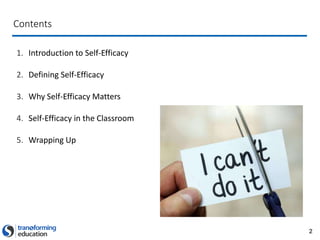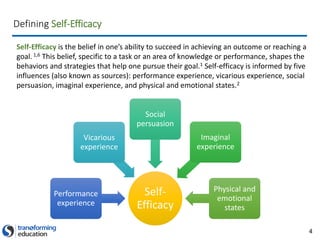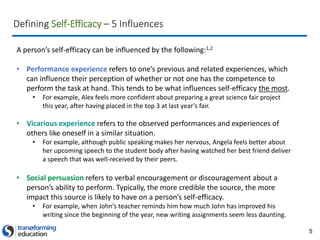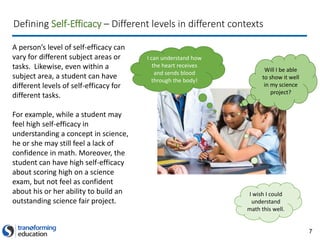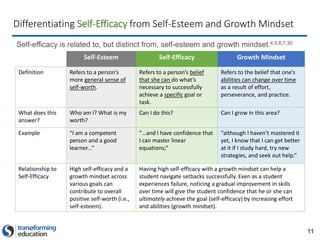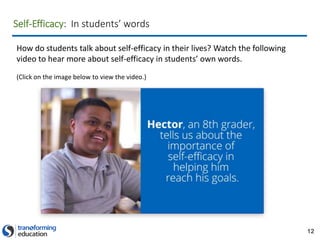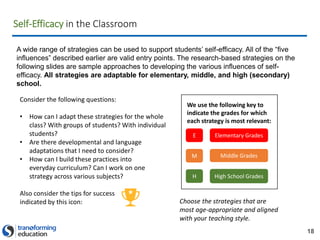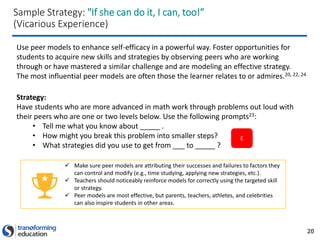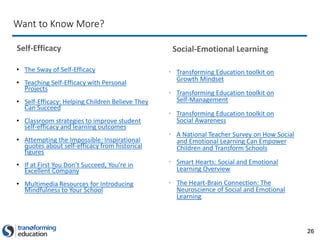This document discusses self-efficacy, which is the belief in one's ability to succeed or achieve goals. It defines self-efficacy and explains that it has 5 influences: performance experience, vicarious experience, social persuasion, imaginal experience, and physical/emotional states. Developing self-efficacy is important as it allows students to better self-regulate, be more resilient, achieve higher academic performance, and find greater success and happiness in life. Teachers can support developing students' self-efficacy.

